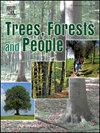Quantifying the distribution of family forest ownership classifications for US federal income tax
IF 2.7
Q1 FORESTRY
引用次数: 0
Abstract
Family forest ownerships are classified in federal income tax law as either personal use, investment, or trade or business, and this classification determines the tax rates, deductions, credits, and filing requirements that apply. Tax classification, therefore, has implications for landowners’ overall profit potential and the economic sustainability of forest management. However, the relative proportion of family forest owners in each tax classification has never been estimated before, though many studies have looked at the typologies of family forest owners based on their forest management behavior including participation in policy tools in the past. We develop a novel framework for categorizing family forest owners within discrete tax classifications. By leveraging the data from the National Woodland Owner Survey, we estimate the distribution of owners across tax classification and account for the area of forestland covered under various tax provisions. Additionally, we construct logit models to understand demographic and ownership variables associated with the likelihood of landowners belonging to different tax classifications. The estimates based on our categorization criteria to replicate tax classifications indicate that approximately 12% of family forestlands held in parcels of four hectares or more across the country may be owned by business owners, 49% by investment owners, and 39% by personal use owners. Variation in demographic and forest ownership characteristics were noted among landowners estimated to fall under different tax classifications. The findings of the study are expected to have implications for tax policy and sustainable forest management in the country. It will assist policymakers, land managers, and other concerned stakeholders in understanding how changes in tax law affect family forest owners and how they manage their forests. Information about tax classification criteria used in this study can also be helpful for landowner education and extension purposes. The results obtained can assist in mapping natural disasters and connecting them to the deductibility of casualty losses based on landowner's tax classification in the future.
求助全文
约1分钟内获得全文
求助全文
来源期刊

Trees, Forests and People
Economics, Econometrics and Finance-Economics, Econometrics and Finance (miscellaneous)
CiteScore
4.30
自引率
7.40%
发文量
172
审稿时长
56 days
 求助内容:
求助内容: 应助结果提醒方式:
应助结果提醒方式:


